Gerrit Rietveld: Wealth of Sobriety reveals the architect’s lesser-known initiatives

Photographer Arjan Bronkhorst has created a e book that goals to show under-the-radar initiatives by revered Dutch architect Gerrit Rietveld. Dezeen has picked out seven of probably the most intriguing.
Spanning over 500 pages, Gerrit Rietveld: Wealth of Sobriety offers an in depth perception into 20 residential initiatives accomplished by the Dutch architect.
Rietveld, who was born in Utrecht in 1888, is greatest recognized for his UNESCO-listed Schroder Home. Nevertheless, all through the course of his profession, the architect accomplished near 100 properties which have not seen as a lot media consideration.
This inspired photographer Arjan Bronkhorst and Rietveld historian Ida van Zijl to doc the lesser-known properties. Over a interval of two years, Bronkhorst and Van Zijl managed to go to 65 properties. The pair then whittled down a choice of 20 to seem within the e book, choosing properties which the felt nonetheless acutely mirrored Rietveld’s architectural type.
Stijn Poelstra images Mondrian-esque parts of the Rietveld Schröder Home
“Rietveld is understood internationally for 2 issues: the Schröder Home and the Purple Blue chair – however there’s a lot extra from his arms that is price seeing,” Bronkhorst informed Dezeen.
“He [Rietveld] doesn’t have the standing of Le Corbusier or Van der Rohe, however whenever you regard his artistic mastermind he is at the very least their equal,” he continued. “Maybe it is time to revaluate his oeuvre.”
Every undertaking has a devoted chapter, which supplies a written overview of Rietveld’s design course of, standout decor options and important alterations which were made over time. That is adopted by a sequence of color photographs that seize the house and, in some instances, its present homeowners.
A number of of the inside pictures additionally seize the straightforward and functionality-focused aesthetic of Rietveld, who as soon as claimed that folks ought to “discover pleasure within the wealth of sobriety” – a quote that grew to become the e book’s identify.
Dezeen has picked out seven placing initiatives from the title – learn on to seek out out extra.
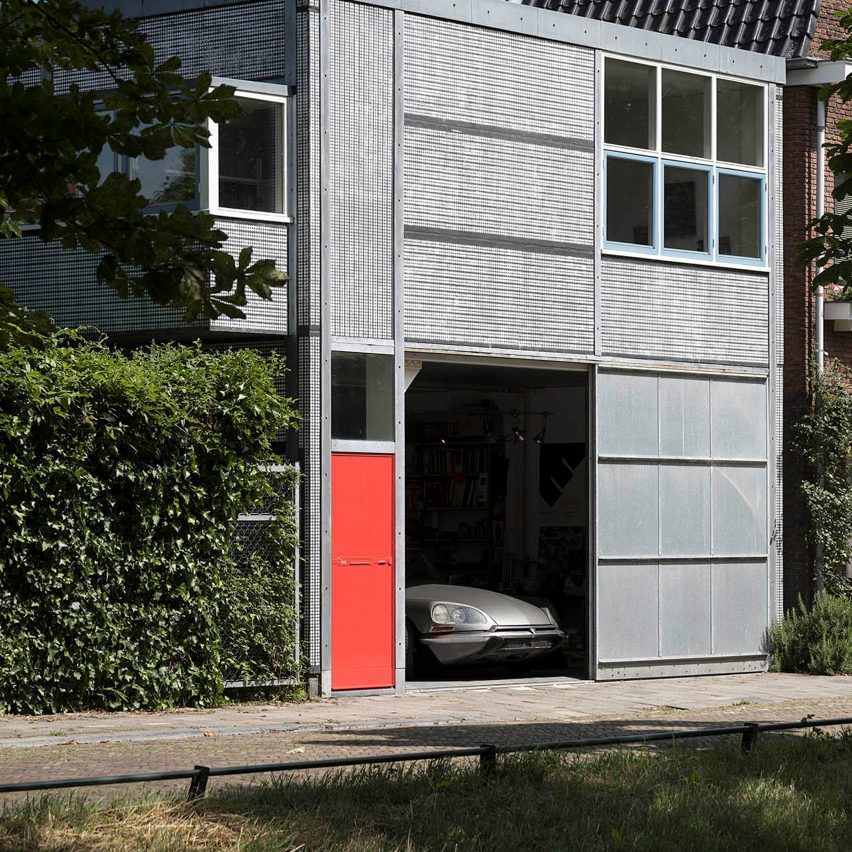
Van de Vuurst de Vries’ chauffeur’s condominium, 1928, Utrecht, the Netherlands
Rietveld prolonged an present storage to create this two-bedroom condominium for a chauffeur and his household.
Assembled in simply three weeks, the property is an early instance of the architect’s experimentation with prefabrication constructing methods – every of the three-by-one metre concrete blocks that clad the facade was made and painted with white dots in a manufacturing facility, earlier than being transported to website.
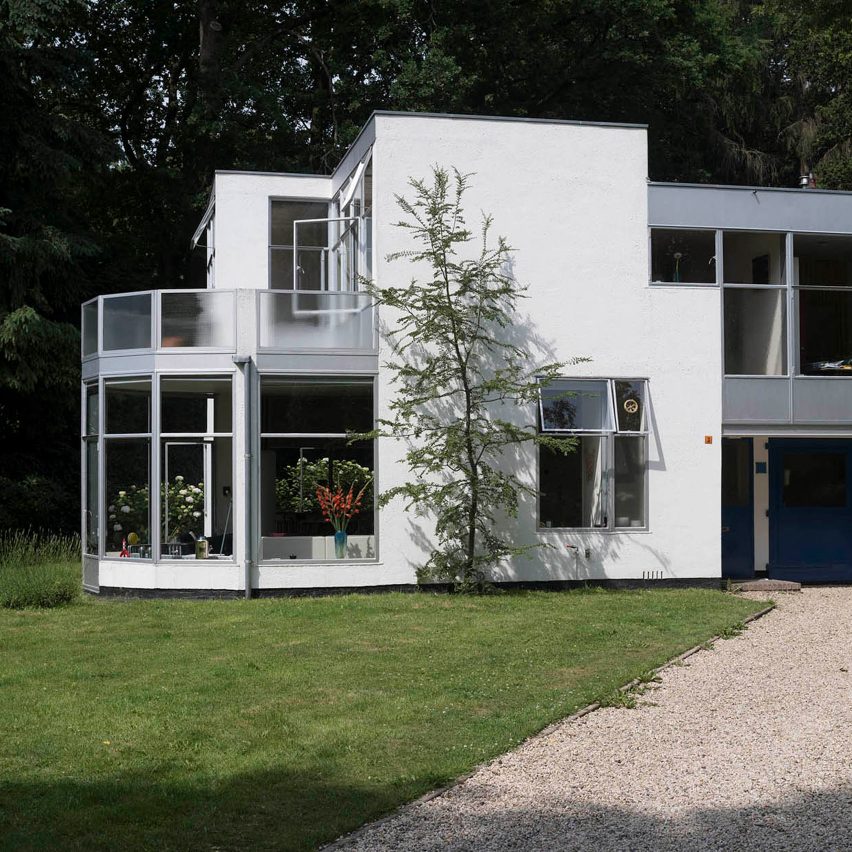
Hildebrand Home, 1934, Blaricum, the Netherlands
Planning committees initially rejected Rietveld’s designs for this home, which did not adjust to the “quasi-rustic” architectural type of neighbouring buildings.
When development was lastly capable of begin in 1934, the home was constructed with a sequence of boxy white volumes and a semi-circular extension.
On its first flooring is a big research the place its first proprietor – youngsters’s writer AD Hildebrand – would escape to put in writing his books, with views of the greenery-lined backyard path.
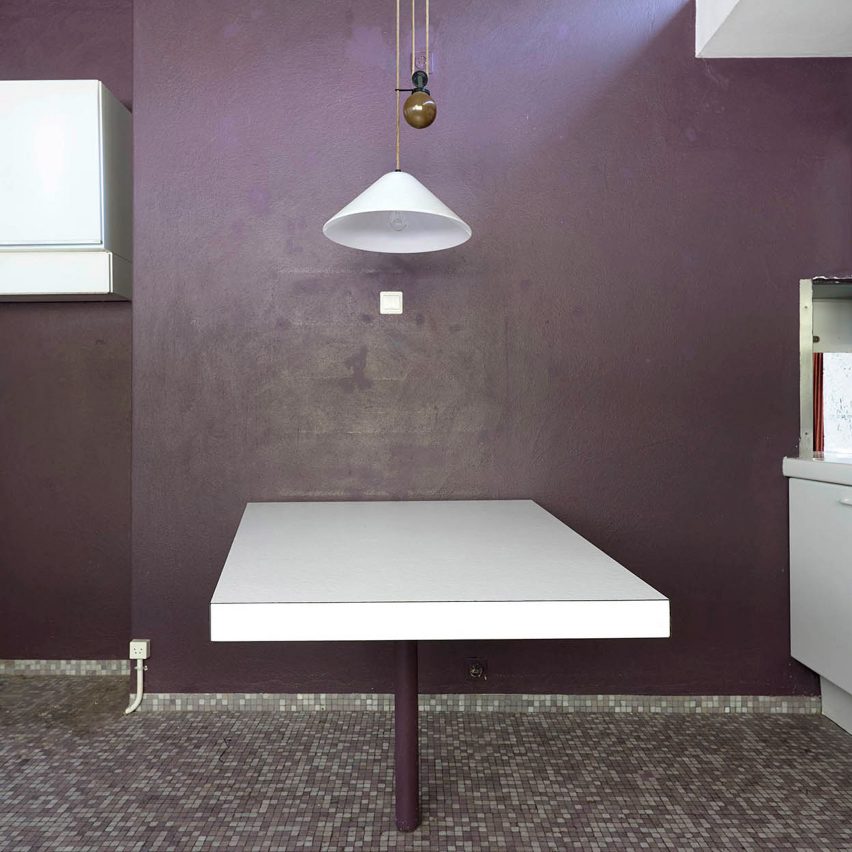
Van den Doel Home, 1957, Ilpendam, the Netherlands
Described by Rietveld as “the results of dozens of years of experimentation”, Van del Doel Home initially comprised of three rectilinear volumes which have been every fronted with glazed bricks.
Though the home’s translucent facade has been ruined over time – the bricks cracked at any time when temperatures dropped under zero – its most up-to-date homeowners have labored to repaint the inside in colors that Rietveld would have initially used, like dark-purple.
Different unique options nonetheless on website embody a two-metre-wide fire in the lounge.

Parkhurst Home, 1956, Ohio, USA
An unassuming dust highway lined with leafy bushes leads as much as Parkhurst Home, the one constructing that Rietveld designed outdoors of the Netherlands.
The architect was by no means capable of bodily go to the property – he was refused entry to the US on allegations of being a communist sympathiser – however as a substitute posted his design proposals to the house’s unique proprietor, Charles Parkhurst.
Described by Parkhurst as a “three-dimensional Mondrian portray”, the house options floor-to-ceiling gridded home windows that supply views of a close-by river, blocks of pink and yellow paint on its facade and a subtly angled roof.
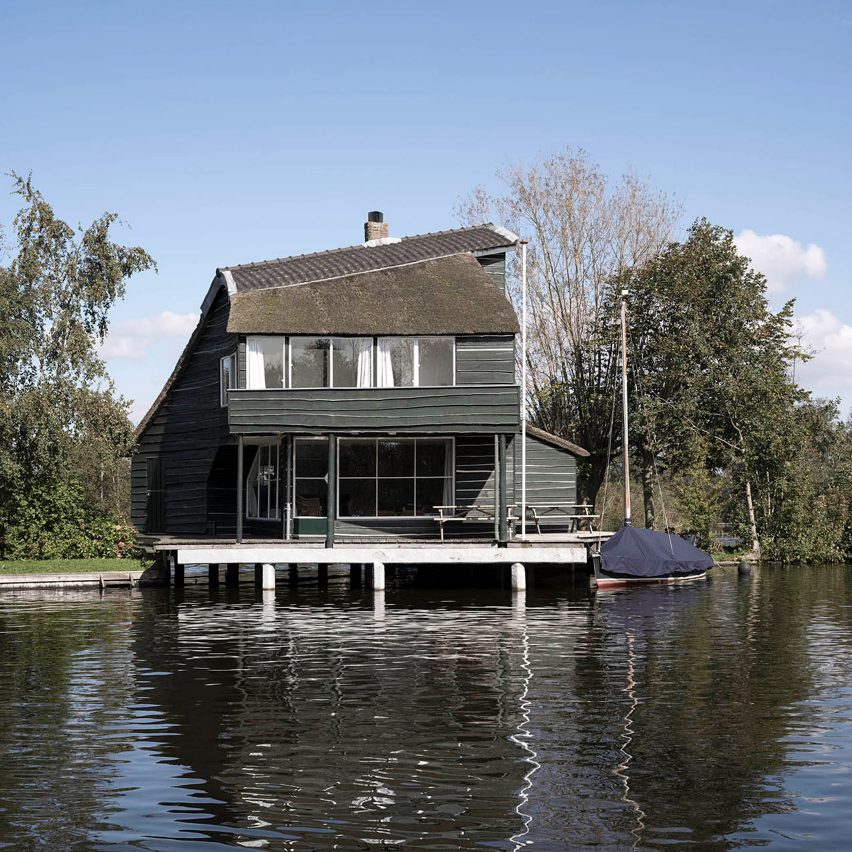
Verrijn Stuart Summerhouse, 1941, Breukelen, the Netherlands
Seven-metre-long concrete foundations assist assist this household vacation house above the waters of the Breukelen’s Loosdrecht lake.
Designed by Rietveld to be in “full concord with the encompassing panorama”, the outside of the home is clad with dark-green timber planks.
Inside are a handful of quirky options that helped counter the actual fact the home initially had no fuel, water or electrical energy provide – together with a lure door within the flooring via which bottles could possibly be lowered into the water and stored cool.
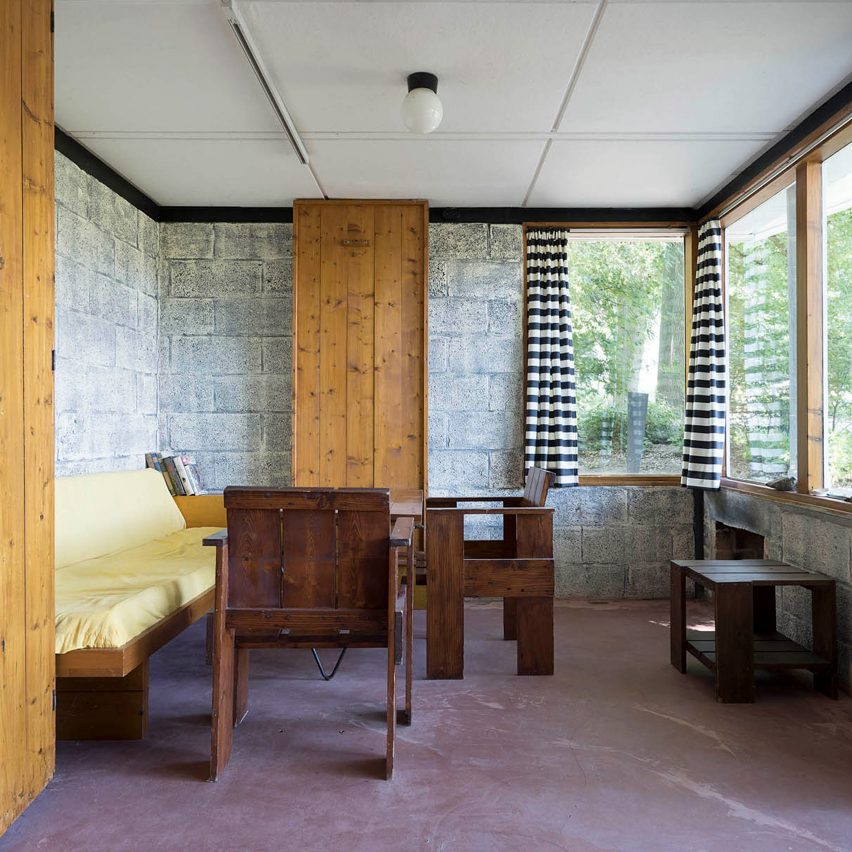
Albatros and De Vries Robbé vacation cottages, 1951, Arnhem, the Netherlands
These quaint vacation cottages have been initially commissioned by a pair of commercial producers that wished staff to have a spot to get away and calm down.
Requested to maintain development prices to a minimal, Rietveld labored to squeeze as many comforts and services as potential into the guesthouses – one in every of which measures simply 33-square metres.
House-saving particulars included beds that fold down from the wall and a espresso desk that could possibly be used to seat further visitors at time for supper.
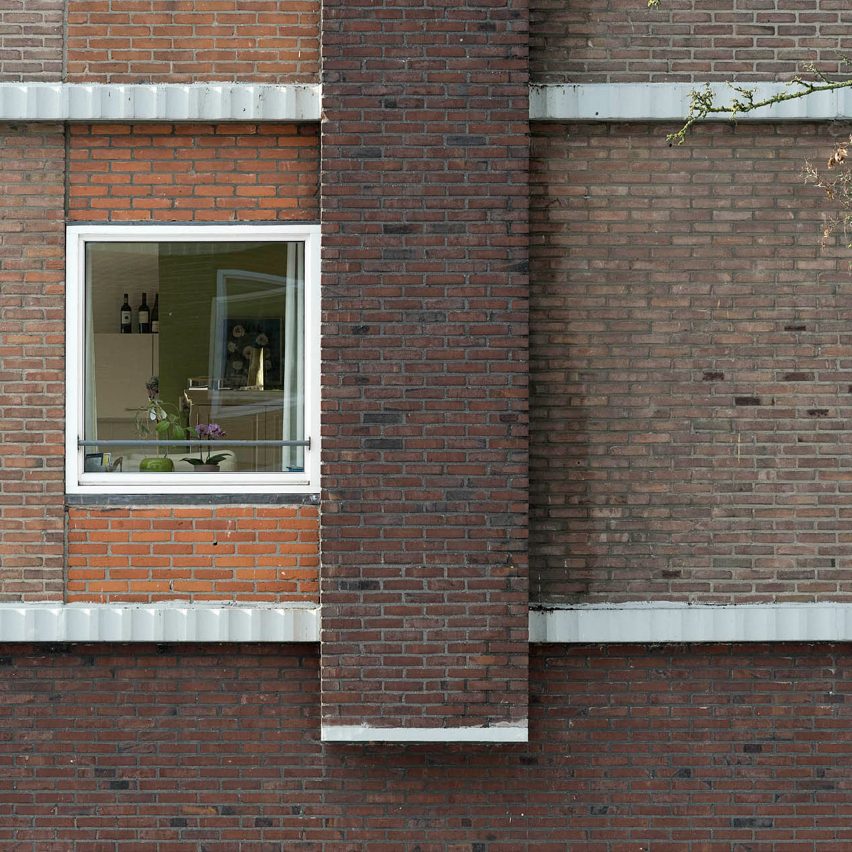
Robijnhof public housing, 1954, Utrecht, the Netherlands
Whereas a majority of Rietveld’s architectural canon consists of personal properties, he had a deep curiosity in enhancing dwelling requirements for the working class.
Within the early 1950s – amidst a housing scarcity within the Netherlands – the architect was known as upon to create Robijnhof lodging block.
He was meticulous concerning the constructing’s exterior look: home windows have been fitted with fluted glass to stop inhabitants from hanging their very own alternative of curtains and open-air areas have been created for drying garments in order that balconies weren’t spoiled by hanging laundry.
Credit:
Writer: Lectura Cultura
Idea and images: Arjan Bronkhorst
Design: Beukers & Scholma
Textual content: Arjan Bronkhorst, Ida van Zijl, Willemijn Zwikstra, Marc van den Eerenbeemt